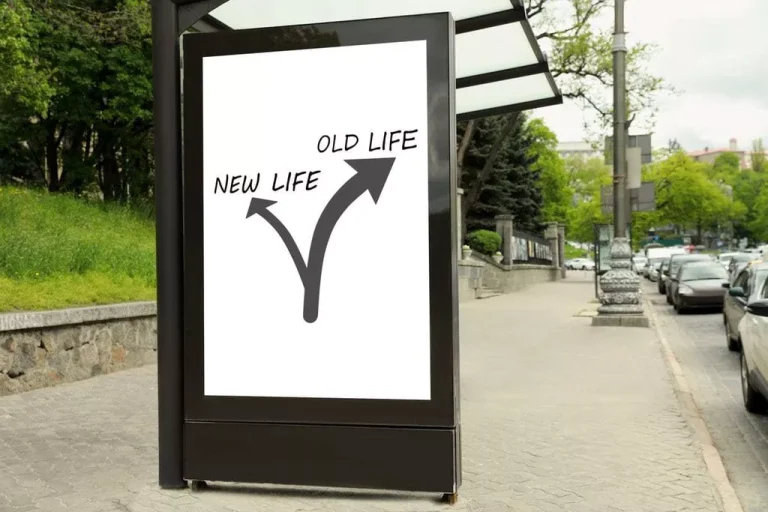
Heavy drinking (i.e., more than 140 grams of pure alcohol, or approximately 12 standard drinks, per day) can cause alcohol-induced hypertriglyceridemia in both diabetics and nondiabetics (Chait et al. 1972). In fact, from a practical standpoint, heavy drinking should be considered as a possible contributing factor in all patients with hypertriglyceridemia. Abstinence from alcohol generally leads to normalization of the triglyceride levels, unless the person has an underlying genetic predisposition for hypertriglyceridemia. Heavy alcohol consumption (i.e., 200 grams of pure alcohol, or approximately 16 standard drinks, per day) can cause ketoacidosis in both diabetics and nondiabetics (Wrenn et al. 1991). People who consume those high amounts of alcohol typically have been drinking and not eating for days and/or have vomited or developed other illnesses from drinking. As a result, those patients frequently have very low blood sugar levels (although some people with alcoholic ketoacidosis have very high blood sugar levels, because the lack of insulin prevents glucose uptake from the blood into the tissues).

Who Should Not Drink Alcohol?
A fasting plasma glucose (FPG) ≥ 126 mg/dL or being on diabetic therapy was considered as type 2 diabetes55. This long-term retrospective cohort study used data from 2008 to 2021 obtained from the Panasonic cohort study database, which included data on annual medical health checkups, medical costs, medical history, and mortality conducted by Panasonic Corporation, Osaka, Japan. The goal of this program is to improve public health by early detection of chronic illnesses, including metabolic disorders, and assessment of underlying risk factors. Drinking just gets more complicated when you consider the immediate impact that “carby” beverages have on your blood sugar levels. Every person at risk of hypoglycemia should be aware of this dangerous side effect, including everyone with type 1 diabetes and all those with type 2 diabetes who use insulin or other medications that can cause low blood sugars, such as sulfonylureas.
Effect of chronic heavy alcohol consumption and GCK/INSR variants on the incidence of diabetes
Until then, however, policy-makers, medical professionals, and the general public should apply caution before considering moderate alcohol consumption as conferring individuals with a reduction in metabolic risk. The updated and expanded meta-analysis showed no reduction in type 2 diabetes risk at any level of alcohol consumption among men, regardless of reference group. This is in contrast can diabetics get drunk to a 2009 meta-analysis, which reported peak reduction in risk among men at 22 g/day (RR 0.87, 95% CI 0.76–1.00), relative to quasi-never drinkers (9). For exploration of this discrepancy, male data were stratified according to whether they had been included in the 2009 meta-analysis (Supplementary Fig. 8). Such a finding hints at marked heterogeneity between the two groups of publications.

Combination of alcohol and glucose consumption as a risk to induce reactive hypoglycemia
- Night owls should consider stopping eating at a certain time, such as 6 p.m., van der Velde said, because the timing of meals can affect digestion and metabolism.
- Significant increases in HDL could be observed in healthy men as early as 17 days after initiation of 40 g/day of alcohol (30).
- Could ethanol metabolism affect satiety, insulin resistance, liver function, and fat formation by indirectly modulating the expression of certain genes, similar to the processes observed under conditions of caloric restriction?
- Catecholamines further decrease insulin production and increase glucagon production.
- In addition, by relying upon only a single cross-sectional self-report of alcohol consumption, sampled studies did not consider the effect of temporal changes in alcohol consumption both during the length of study and prior to study initiation.
NA, data not available; OATT, 20‐g alcohol tolerance test; OGATT, combined 75‐g glucose and 20‐g alcohol tolerance test. We genotyped the alcohol dehydrogenase (ADH)1B and aldehyde dehydrogenase (ALDH)2 loci in saliva samples using real‐time polymerase chain reaction (552C Regular Flocked Swab, Nylon Tip; NSD Co., Ltd., Tokyo, Japan). The participants then completed a questionnaire regarding their drinking habits (frequency and amount of alcohol consumption on a single occasion). When we verified that the potential participants were biologically capable of consuming alcohol, using these tests, they were enrolled in the study.
- CONCLUSIONS—Among patients with type 2 diabetes who had previously abstained from alcohol, initiation of moderate daily alcohol consumption reduced FPG but not postprandial glucose.
- In contrast, a severe and sustained hypoglycemia is elicited when alcohol is acutely administered to humans [9,17,18] or animals [19,20] fasted ~3–4 days.
- The present study included only Japanese people and showed results different from the association between alcohol consumption and the onset of type 2 diabetes in Western populations.
All other insulin secretion indices were derived from the OGTT with insulin concentration given in μU/mL and glucose concentration given mmol/L. The IGI was calculated as (insulin 60min − insulin 0min)/(glucose 60min − glucose 0min)10,11. Smoking status was classified as current, former, or never smoker, and physical activity was calculated by multiplying the time spent engaging in activities at a particular intensity level by the metabolic equivalent of task score. Despite the consistent observation that acute and chronic alcohol impairs in vivo-determined IMGU by muscle, there is little consensus on the mechanism underlying the insulin resistance. Alcohol may theoretically blunt insulin action at a number of recognized regulatory steps including PI3K/AKT signal transduction and/or GLUT4 translocation [134].

Supplementary data

Night owls are more likely to develop diabetes, study says — but a simple lifestyle change may help
- If you never or rarely drink alcohol, you’re not alone—in fact, people with diabetes drink about half as much as other adults.
- The concurrent carbohydrate intake might be the principal reason for the sensation of hunger after alcohol consumption in the non‐diabetic participants.
- As a result of the immune system’s attack, the beta cells can no longer produce insulin.
- Unlike protein, fat, or carbohydrate, alcohol doesn’t require insulin to provide energy to the body.
Alcohol and Liver Function in Diabetes
- Collectively, these data are consistent with those from in vivo studies showing acute alcohol decreases whole-body estimates of glucose recycling (e.g., glucose → lactate → glucose) and lactate turnover [27].
- Blood glucose regulation by insulin in healthy people and in people with type 1 or type 2 diabetes.
- One of these molecules is prostaglandin E2, which stimulates the metabolic activity of hepatocytes—that is, it induces them to break down and synthesize many essential molecules through a variety of chemical reactions that also require oxygen.
Data Synthesis and Analysis


